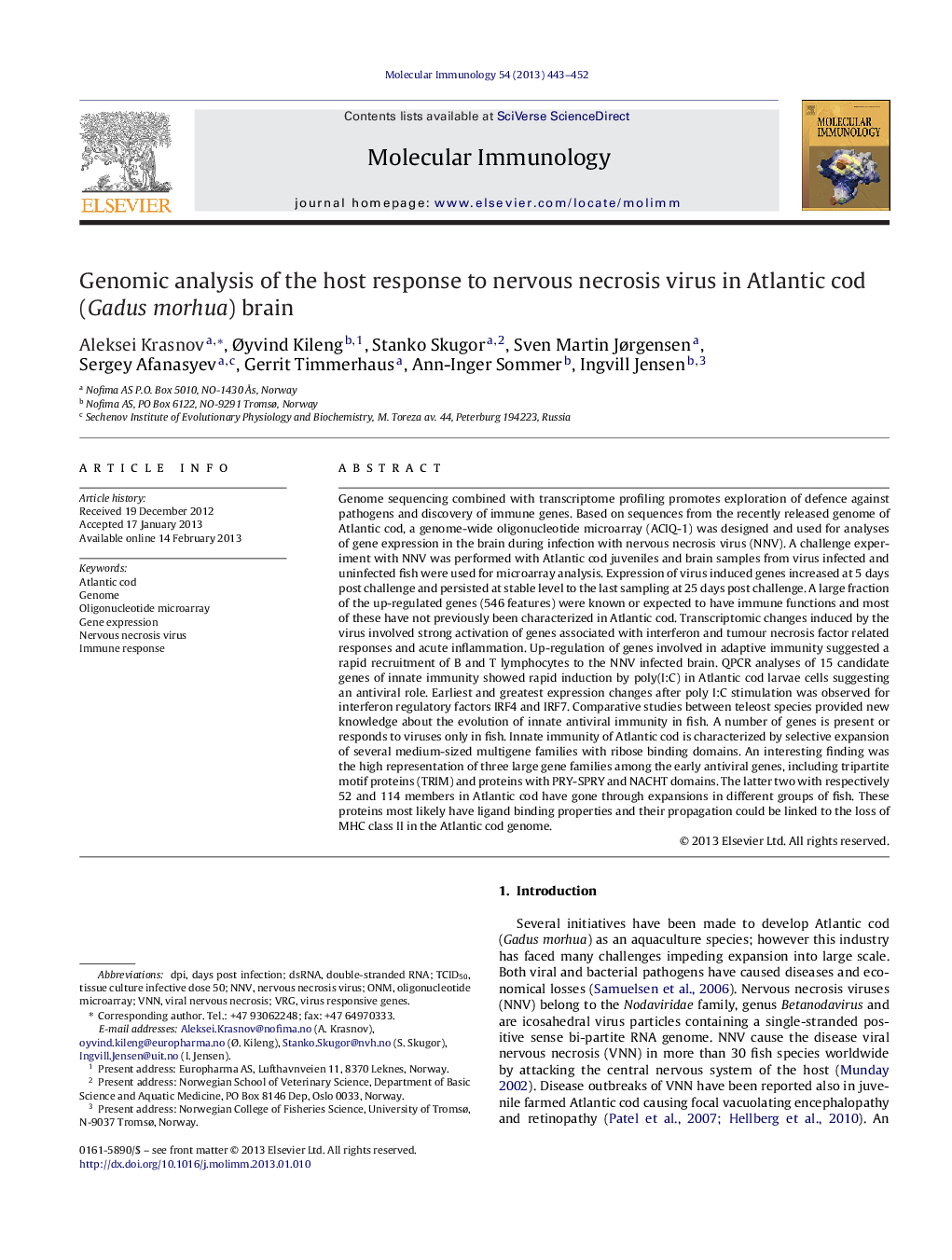| Article ID | Journal | Published Year | Pages | File Type |
|---|---|---|---|---|
| 2831200 | Molecular Immunology | 2013 | 10 Pages |
Genome sequencing combined with transcriptome profiling promotes exploration of defence against pathogens and discovery of immune genes. Based on sequences from the recently released genome of Atlantic cod, a genome-wide oligonucleotide microarray (ACIQ-1) was designed and used for analyses of gene expression in the brain during infection with nervous necrosis virus (NNV). A challenge experiment with NNV was performed with Atlantic cod juveniles and brain samples from virus infected and uninfected fish were used for microarray analysis. Expression of virus induced genes increased at 5 days post challenge and persisted at stable level to the last sampling at 25 days post challenge. A large fraction of the up-regulated genes (546 features) were known or expected to have immune functions and most of these have not previously been characterized in Atlantic cod. Transcriptomic changes induced by the virus involved strong activation of genes associated with interferon and tumour necrosis factor related responses and acute inflammation. Up-regulation of genes involved in adaptive immunity suggested a rapid recruitment of B and T lymphocytes to the NNV infected brain. QPCR analyses of 15 candidate genes of innate immunity showed rapid induction by poly(I:C) in Atlantic cod larvae cells suggesting an antiviral role. Earliest and greatest expression changes after poly I:C stimulation was observed for interferon regulatory factors IRF4 and IRF7. Comparative studies between teleost species provided new knowledge about the evolution of innate antiviral immunity in fish. A number of genes is present or responds to viruses only in fish. Innate immunity of Atlantic cod is characterized by selective expansion of several medium-sized multigene families with ribose binding domains. An interesting finding was the high representation of three large gene families among the early antiviral genes, including tripartite motif proteins (TRIM) and proteins with PRY-SPRY and NACHT domains. The latter two with respectively 52 and 114 members in Atlantic cod have gone through expansions in different groups of fish. These proteins most likely have ligand binding properties and their propagation could be linked to the loss of MHC class II in the Atlantic cod genome.
► Genome-wide Atlantic cod oligonucleotide microarray was constructed and annotated. ► Microarray analyses of virus infected brain showed complex immune responses. ► Viral infection induced strong inflammation and rapid recruitment of B and T cells. ► Large fraction of virus responsive genes belong to TRIM, NACHT and PRY-SPRE families. ► Comparative genomics revealed common and specific features of innate immunity of cod.
